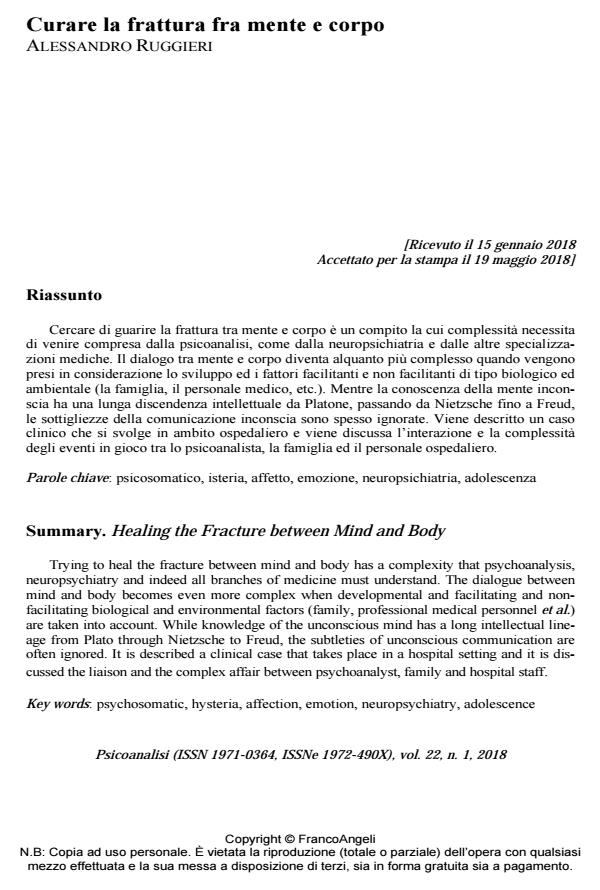Healing the Fracture between Mind and Body
Journal title PSICOANALISI
Author/s Alessandro Ruggieri
Publishing Year 2018 Issue 2018/1
Language Italian Pages 35 P. 79-113 File size 298 KB
DOI 10.3280/PSI2018-001005
DOI is like a bar code for intellectual property: to have more infomation
click here
Below, you can see the article first page
If you want to buy this article in PDF format, you can do it, following the instructions to buy download credits

FrancoAngeli is member of Publishers International Linking Association, Inc (PILA), a not-for-profit association which run the CrossRef service enabling links to and from online scholarly content.
Trying to heal the fracture between mind and body has a complexity that psychoanalysis, neuropsychiatry and indeed all branches of medicine must understand. The dialogue between mind and body becomes even more complex when developmental and facilitating and non-facilitating biological and environmental factors (family, professional medical personnel et al.) are taken into account. While knowledge of the unconscious mind has a long intellectual line-age from Plato through Nietzsche to Freud, the subtleties of unconscious communication are often ignored. It is described a clinical case that takes place in a hospital setting and it is dis-cussed the liaison and the complex affair between psychoanalyst, family and hospital staff.
Keywords: Psychosomatic, hysteria, affection, emotion, neuropsychiatry, adolescence
Alessandro Ruggieri, Curare la frattura fra mente e corpo in "PSICOANALISI" 1/2018, pp 79-113, DOI: 10.3280/PSI2018-001005